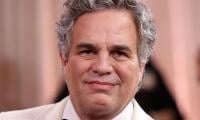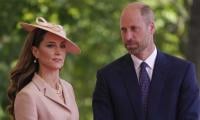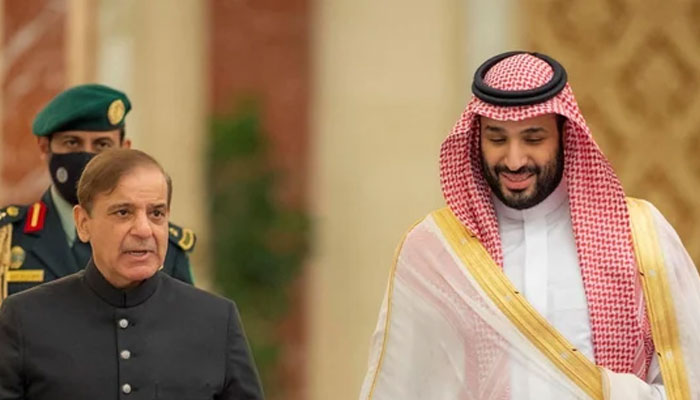Another IMF condition fulfilled: S Arabia to renew $3bn deposit for Pakistan this week
Saudi Arabia plans to renew its $3 billion deposit in assistance to Pakistan which looks to rein in one of Asia’s highest inflation rates and stave off a current-account crisis
RIYADH: Saudi Arabia plans to renew its $3 billion deposit in assistance to Pakistan, as the South Asian nation looks to rein in one of Asia’s highest inflation rates and stave off a current-account crisis, according to people familiar with the matter.
The Saudi Finance Ministry plans to renew its $3 billion deposit with State Bank of Pakistan as soon as this week, the sources said, asking not to be identified discussing private deliberations, Bloomberg reported on Saturday.
The kingdom also plans to provide $100 million a month for 10 months in petroleum products that will be granted as additional support, the sources added.
Pakistan’s funding gap has been covered after the kingdom’s commitment, the sources said, adding that the assurance will pave the way for the International Monetary Fund’s loan approval at the end of the month. Saudi Arabia has been coordinating with the IMF to ensure that Pakistan is fully supported, one of the sources said. The commitment can be announced within the next two days, said one of the sources. Representatives for Saudi Arabia and Pakistan’s Finance Ministry didn’t immediately respond to messages seeking comment.
The aid comes as the IMF has been looking to assess Saudi Arabia’s commitment to financing Pakistan before the multilateral lender disburses fresh funds to the South Asian nation. Bloomberg reported in July that the IMF wanted to ensure that Saudi Arabia will follow through with as much as $4 billion in funding to Pakistan to ensure Islamabad does not have a funding gap after the IMF loan.
Saudi Arabia extended support multiple times to Pakistan. It pledged $4.2 billion in assistance to Pakistan when the former prime minister, Imran Khan, visited the kingdom. That included a deposit of $3 billion with the State Bank of Pakistan to help shore up its reserves and a facility to finance oil derivatives trade worth $1.2 billion during the year.
Saudi Arabia discussed extending the term of its $3 billion deposit with Pakistan when Prime Minister Shehbaz Sharif met the kingdom’s Crown Prince Mohammed bin Salman in May.
Mehtab Haider adds from Islamabad: On the eve of 75 years of economic journey of Pakistan, the government has shared a roadmap based upon nine-point agenda for ensuring sustained and inclusive economic growth, including ensuring structural changes by focusing on export growth instead of import substitution.
“Pakistan has made significant headway inspite of many challenges that it has faced. The nation was able to transform itself into a semi-industrial economy and hub for business activities,” it was stated in the first-ever but a detailed report titled “75-Years-Economic Journey of Pakistan” released by the Ministry of Finance just a day ahead on the occasion of Independence Day of Pakistan on Saturday.
The report states that the country’s GDP growth stood at 1.8 percent in 1950, which has now increased to 5.97 percent in 2022.
Pakistan’s per capita income stood at $86 in 1950, which had now jumped up to $1,798 in 2022. The size of Pakistan’s economy was hovering around $3 billion in 1950, which had increased to $383 billion in 2022. The country’s exports were standing at $163.9 million in 1949, which had now jumped up to $32.5 billion. The country’s imports were standing at $355.5 million in 1949 which has now increased to $72 billion in 2022. The report highlighted green revolution, construction of Tarbela Dam, industrialization phase, separation of East Pakistan, construction of national highways, nuclear explosion in 1998, Islamic banking, women into parliament, China Pakistan Economic Corridor (CPEC) and moving towards digital Pakistan.
It states that the nine-point agenda comprised ensuring structural changes by focusing on export growth instead of import substitution, increase in GDP growth to 6-7 percent in the medium term, sustain growth rate over the medium and long term without creating pressure on balance of payments, reduce poverty by ensuring high and inclusive growth and strengthening social safety nets, improve tourism and information technology, improve investment climate and attract domestic and foreign investment through effective implementation on investment promotion strategy, establish special economic zones focusing on export promotion, import substitution and employment generation, make youth strength of the nation through various youth skills development program and to realise these objectives, short-medium and long term economic programs are underway for all sectors of the economy, including agriculture, industry and services.
In crux, the aspiration is to put the economy on a higher growth trajectory through higher investment, efficiency and enhanced productivity.
While dwelling upon historic achievements, the report states that the prevalence of poverty stood at 40.24 percent in 1963-64 but now it has reduced to 21.9 percent in 2018-19 despite changing its methodology on more comprehensive basis by calculating poverty on basis of cost of basic needs.
The numbers of employed labour force increased from 16.24 million in 1963-64 to 67.25 million in 2020-21. The size of population stood at 65.3 million in 1972, which has now increased to 207.7 million on the basis of last population census held in 2017. It is estimated that now the population might have touched 227 million in 2022. The total number of registered vehicles were standing at 31,892 in 1947, which had now touched 32.4 million in 2021. The total number of telephone and mobile users stood at 15200 in 1947, which had now touched to 194.2 million in 2021. The life expectancy now touched 67.4 years in Pakistan.
The health expenditures were just meager and stood at Rs one million in 1947, which had now touched 657.185 billion in 2020-21. The infant mortality rate was standing at 150-180 per thousand, which now increased to 58.8 per thousand in 2021. The number of public sector hospitals were just 292 in 1947 which had now increased to 1276 in 2021. The number of universities were just 2 in 1947, which now stood at 233 universities in 2021.
Total number of Degree Colleges stood at 40 in 1959-60, which had now increased to 3,872 in 2021. The total number of technical and vocational institutions were just 46 in 1947-48 that now increased to 3,914 in 2020-21. The number of primary schools were just 8.4 thousand in 1947-48, which had now increased to 187.9 thousand in 2021.
The employment in universities touched 2,000,000 now. The overall literacy in the country increased from 16.4 percent in 1951 to 68.2 percent in 2020-21. The remittances sent by Pakistanis living abroad were standing at just 0.14 billion in 1973, which had now jumped up to $31.2 billion in 2021. The foreign direct investment fetched by the country to the tune of $1.2 million in FY1950 had now increased to $1,867.7 million in FY2022.
The share of indirect taxes and direct taxes stood at 78 and 22 percent respectively in 1960s, which now stood at 39 percent by direct taxes and 61 percent by indirect taxes in 2020s. The size of public sector development programme (PSDP) has varied over the years depending upon available fiscal space but it stood at around Rs800 billion. The share of manufacturing at the beginning was standing at 80 percent but now it stood at 65 percent. Wheat production stood at 3.354 million tons in 1948, which had now increased to 26.394 million tons in 2022.
-
 Mark Ruffalo Makes Strong Political Comments At 2026 Golden Globes
Mark Ruffalo Makes Strong Political Comments At 2026 Golden Globes -
 Leonardo DiCaprio's Girlfriend Flaunts Stylish Dress After Golden Globes Age Joke
Leonardo DiCaprio's Girlfriend Flaunts Stylish Dress After Golden Globes Age Joke -
 Harry Styles Launches Secret Site, Fuels Comeback Speculation
Harry Styles Launches Secret Site, Fuels Comeback Speculation -
 Kate Middleton's New Approach Expected To Draw Criticism From Meghan's Camp
Kate Middleton's New Approach Expected To Draw Criticism From Meghan's Camp -
 Jennifer Lawrence Admits Feeling Nervous Over Taking New Step
Jennifer Lawrence Admits Feeling Nervous Over Taking New Step -
 Lee Cronin’s ‘The Mummy’ Drops Its Chilling First Trailer
Lee Cronin’s ‘The Mummy’ Drops Its Chilling First Trailer -
 Louis Tomlinson Reveals What Former 1D Members' Dynamic Is After Liam Payne's Death
Louis Tomlinson Reveals What Former 1D Members' Dynamic Is After Liam Payne's Death -
 Jacob Elordi, Ana De Armas Get Cozy During 2026 Golden Globes
Jacob Elordi, Ana De Armas Get Cozy During 2026 Golden Globes -
 Meghan Markle Turns Juvenile And Plans Half Bit Ruse: ‘She’s Trying To Get On Her Radar’
Meghan Markle Turns Juvenile And Plans Half Bit Ruse: ‘She’s Trying To Get On Her Radar’ -
 Anthropic Rolls Out Healthcare Features For Claude AI Amid OpenAI Push
Anthropic Rolls Out Healthcare Features For Claude AI Amid OpenAI Push -
 Inside 'Stranger Things' Team's Daring Method To Film Finale
Inside 'Stranger Things' Team's Daring Method To Film Finale -
 Robert Irwin Announces His Return To Reality TV After 'DWTS' Victory
Robert Irwin Announces His Return To Reality TV After 'DWTS' Victory -
 Uber Faces Landmark Trial In US Over Sexual Assault Claim
Uber Faces Landmark Trial In US Over Sexual Assault Claim -
 Zoë Kravitz Makes Major Decision Before Arriving At 2026 Golden Globes
Zoë Kravitz Makes Major Decision Before Arriving At 2026 Golden Globes -
 Jennifer Lawrence Offers Major Role To Ariana Grande, Singer Responds
Jennifer Lawrence Offers Major Role To Ariana Grande, Singer Responds -
 Maya Hawke Highlights Major Discrepancy In 'Stranger Things' Season 5
Maya Hawke Highlights Major Discrepancy In 'Stranger Things' Season 5




